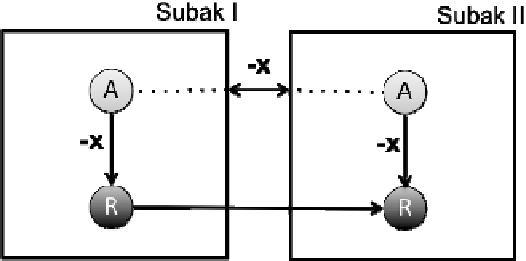Information Technology Reference
In-Depth Information
empirical data for our model design, our discussion restricts itself to model selection
and specification; we do not focus on model calibration. We depart from an extensive
body of work done on the Bali case, both descriptive ethnographical data and compu-
tational models. The models represent a realistic description of the important ecologi-
cal functions, water availability and pest dynamics, e.g., [9-11]. The models of social-
ecological dynamics in Bali focus on the level of coordination [9-11] and cooperation
[6, 8] in irrigation schedules. Typically in these models the subaks are represented as
the smallest dynamic entity. It is assumed that within a subak everyone sticks to the
agreed rules, i.e., cooperates by executing a particular cropping plan, see figure 2. For
the research aims of those Bali models this is a sensible simplification, however the
recent insight of the variation in subak outcomes force us to zoom into the within
subak dynamics itself, see figure 3. To represent the social dynamics, i.e., the ability
of the rice paddy farmers to collectively adapt when environmental or social issues
arise, guides the focus to research of cooperation. There exist a vast body of literature
on cooperation, suggesting various mechanisms that lead to cooperation (that vary
across the different social science fields, such as economics, social psychology and
neuro-sciences). In light of our aim to connect move towards an intermediate level of
the levels of abstraction, recall Figure 1. We selected to start with an abstract model
of cooperation [12], an ABM reproduction of [13],. This paper will focus on illustrat-
ing some of the challenges and approaches we take to design a contextualised social-
ecological model of cooperation in Bali.
Fig. 2.
Schematic overview of the focus on between subak dynamics of existing models of
coordination and cooperation in Bali. The actors (A) in a subak take out x amount of water(R).
The amount x is a result of the between subak coordination. It is a 'rule' that all actors know
(dotted line) and are assumed to comply to. The subaks are interconnected via the network of
rivers and canals of water (R). Where all actors have access to the water, but when actors from
Subak 1 take out water (upstream) there is less water left for the actors in Subak 2, i.e., a typi-
cal common pool resource.


